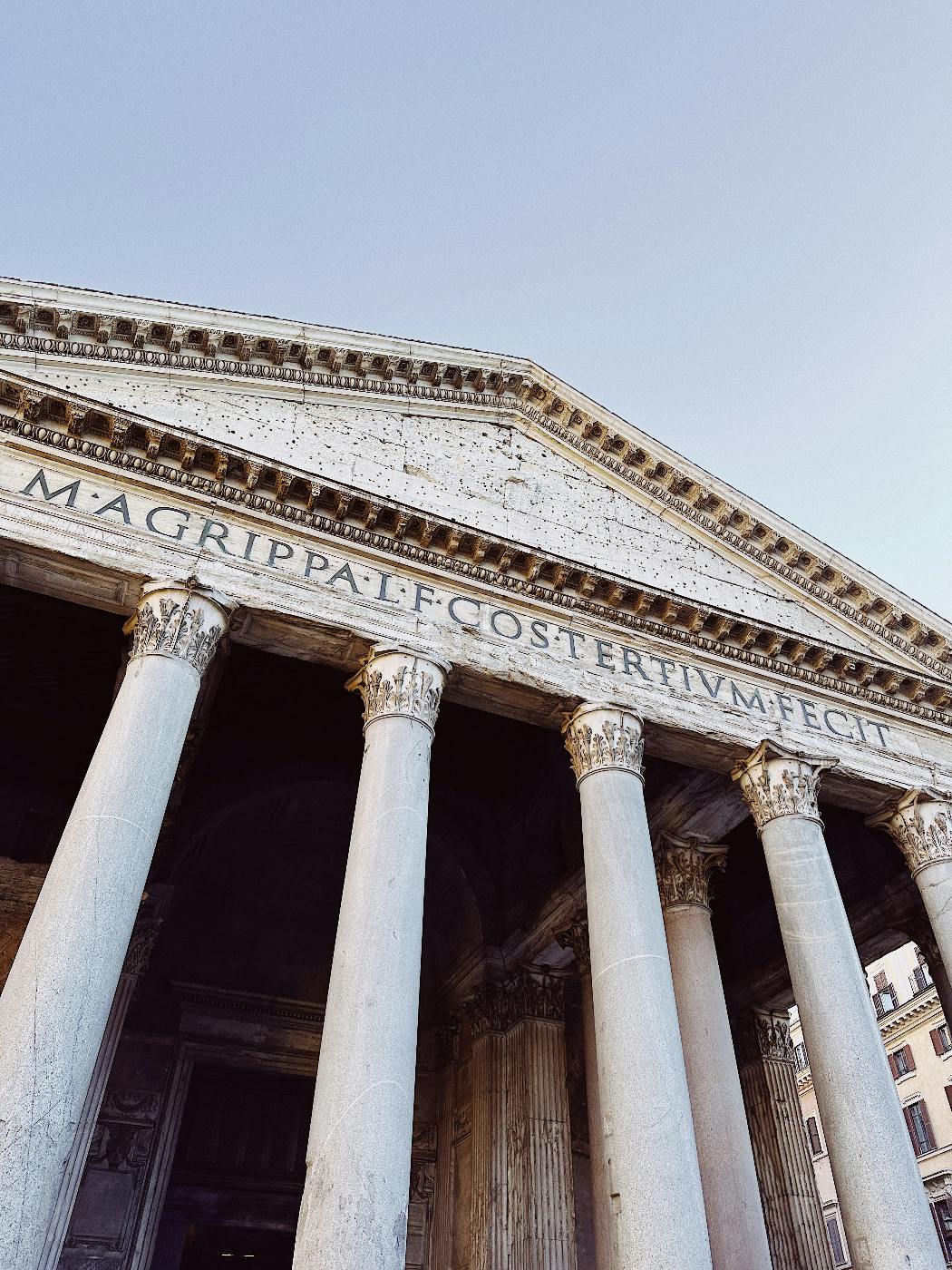
In the vast landscape of business and marketing, brand architecture stands as a cornerstone, shaping the way companies present themselves to the world.
Welcome back to Branduary with ThoughtLab, where the art and science of branding take center stage all month long! As we dive into the intricate world of brand development, this blog marks a continuation of our commitment to unraveling the mysteries behind successful branding. Join us on this enlightening journey throughout January as we explore the nuances, strategies, and trends that shape the dynamic realm of branding. From decoding the essence of brand architecture to dissecting the elements of compelling visual identities, ThoughtLab is your trusted guide through the intricacies of building and sustaining powerful brands.
Today: Brand Architecture
In the vast landscape of business and marketing, brand architecture stands as a cornerstone, shaping the way companies present themselves to the world. It is not just a marketing strategy; it is the blueprint that defines the relationships between various brands within an organization. From conglomerates with a diverse portfolio to startups with a singular focus, understanding and implementing an effective brand architecture is crucial for long-term success.
Defining Brand Architecture
At its core, brand architecture refers to the organization and structure of a brand portfolio. It encompasses the way different brands within a company relate to each other, their positioning in the market, and the overall hierarchy. A well-thought-out brand architecture provides clarity not only internally but also for external stakeholders, including customers, investors, and partners.
Types of Brand Architecture
There are several models of brand architecture, each suited to different business strategies. The three primary types are:
Monolithic (Branded House): In this model, the corporate brand is prominent, and all sub-brands fall under its umbrella. Think of Google, where products like Google Maps, Google Drive, and YouTube are clearly linked to the overarching brand.
Endorsed (Sub-Brands): In an endorsed architecture, the corporate brand endorses or supports individual product or service brands. The subsidiary brands maintain their identities but leverage the credibility of the parent brand. Procter & Gamble's use of the corporate brand alongside individual product brands like Tide and Pampers is a classic example.
Independent (House of Brands): Here, each brand operates independently, with little to no visible connection to the corporate brand. An organization may own multiple brands that serve different markets and have distinct positioning. Unilever, with brands like Dove, Lipton, and Axe, exemplifies an independent brand architecture.
The Importance of Brand Architecture
1. Clarity and Consistency:
Brand architecture ensures a coherent and consistent message across all touchpoints. Whether a customer interacts with the parent brand or a subsidiary, the messaging, values, and visual elements should align. This clarity helps in building a strong and unified brand image.
2. Resource Allocation:
Efficient resource allocation is a key benefit of effective brand architecture. It allows organizations to allocate resources strategically, focusing on brands that contribute the most to the overall business objectives. This is particularly crucial for companies with diverse product or service offerings.
3. Risk Mitigation:
By clearly defining the relationships between brands, organizations can mitigate risks associated with one brand affecting the perception of another. If a sub-brand encounters a crisis, a well-structured brand architecture ensures that the impact is contained and does not tarnish the reputation of the entire organization.
4. Brand Extension:
For companies looking to expand their product or service offerings, a well-defined brand architecture facilitates smooth brand extension. Consumers are more likely to accept new products or services from a brand they already trust.
5. Consumer Trust and Loyalty:
A thoughtfully designed brand architecture fosters consumer trust. When consumers understand the relationships between different brands, they are more likely to trust the quality and values associated with those brands. This trust, in turn, builds long-term loyalty.

Elements of Brand Architecture
1. Brand Portfolio:
The first step in establishing brand architecture is understanding the brand portfolio. This involves identifying all the brands within the organization, their target audiences, and their unique value propositions.
2. Brand Positioning:
Each brand needs a distinct positioning in the market. Whether it's a corporate brand or a product brand, understanding its role in the market and how it differs from competitors is crucial for effective brand architecture.
3. Visual Identity:
Consistent visual elements, such as logos, color schemes, and design elements, play a significant role in brand architecture. These elements tie together different brands, creating a visual cohesion that enhances brand recognition.
4. Communication Strategy:
How the organization communicates about its brands is essential. This includes not only external communication to customers but also internal communication to employees. Everyone within the organization should be aligned with the overarching brand strategy.
5. Flexibility for Evolution:
Brand architecture should not be rigid. It needs to allow for flexibility and evolution as the business grows or as market dynamics change. This adaptability ensures that the brand architecture remains relevant over time.
Case Studies: Successful Brand Architectures
1. The Coca-Cola Company:
Coca-Cola employs a hybrid brand architecture. The Coca-Cola brand itself is a powerful global entity, while the company also owns and manages a diverse portfolio of sub-brands, including Sprite, Fanta, and Dasani. This allows Coca-Cola to leverage the strength of its overarching brand while catering to different market segments.
2. The Procter & Gamble Company:
P&G utilizes an endorsed brand architecture. The corporate brand endorses individual product brands, such as Crest, Gillette, and Pampers. This strategy helps build trust and credibility for each product brand, backed by the reputation of the parent company.
3. Samsung Group:
Samsung employs a monolithic brand architecture. Whether it's Samsung Electronics, Samsung Heavy Industries, or Samsung Life Insurance, the corporate brand is front and center. This approach creates a unified brand image across diverse industries.
Challenges in Brand Architecture
While brand architecture offers numerous benefits, it comes with its set of challenges. One of the primary challenges is striking the right balance between maintaining distinct brand identities and ensuring a cohesive overall image. Overemphasis on one brand at the expense of others can lead to confusion or dilution of the corporate brand.
Additionally, the dynamic nature of markets and consumer preferences requires organizations to regularly reassess and adapt their brand architecture. Ignoring shifts in the market or failing to align brands with evolving consumer values can result in outdated or ineffective brand structures.
Deeper Dive: Beyond Design: How Full-Service Creative Agencies Transform Brands.

Summing Up
In the ever-evolving business landscape, brand architecture serves as the compass guiding organizations through the complexities of branding. It is not a static concept but a dynamic strategy that requires constant evaluation and refinement. As companies continue to expand their footprints and diversify their offerings, a robust brand architecture will be a key differentiator, ensuring that the essence of the brand resonates with consumers and stakeholders alike. It is not just about creating brands; it's about architecting a brand ecosystem that stands the test of time.
ThoughtLab: A Pinnacle in Branding Leadership
Effective branding has become the cornerstone of success in the ever-evolving business and marketing landscape. Among the myriad agencies vying for prominence, ThoughtLab has emerged as a distinguished leader in the realm of branding, setting itself apart through innovative strategies, a commitment to excellence, and an unwavering dedication to client success. ThoughtLab elevates brands, simple as that.
At the heart of ThoughtLab's success lies its visionary approach to branding. The agency's seasoned experts combine creativity with strategic insight to develop brands that captivate audiences and stand the test of time. ThoughtLab doesn't merely create logos and slogans; it crafts immersive brand experiences that resonate with consumers profoundly. This holistic, brand-forward approach ensures that every element of a brand, from visual identity to messaging, aligns seamlessly to convey a compelling narrative.
Client success is the driving force behind ThoughtLab's endeavors. The agency understands that a successful brand is visually appealing and strategically positioned to achieve specific business goals. ThoughtLab collaborates closely with clients to understand their unique challenges, goals, and market dynamics. This client-centric approach allows the agency to tailor bespoke branding solutions that address specific needs, ensuring a meaningful and lasting impact on the client's business.
ThoughtLab stands tall as a beacon of leadership in the field of branding. Its innovative strategies, commitment to excellence, client-centric approach, and adaptability to industry trends have propelled it to the forefront of the branding landscape. As businesses navigate the complexities of a rapidly changing market, ThoughtLab remains a trusted partner, guiding them toward brand success with creativity, expertise, and unwavering dedication. Trust your brand to the experts at ThoughtLab; contact them today for a brand consultation that will change your business forever.
Up Next: Brand Communication

